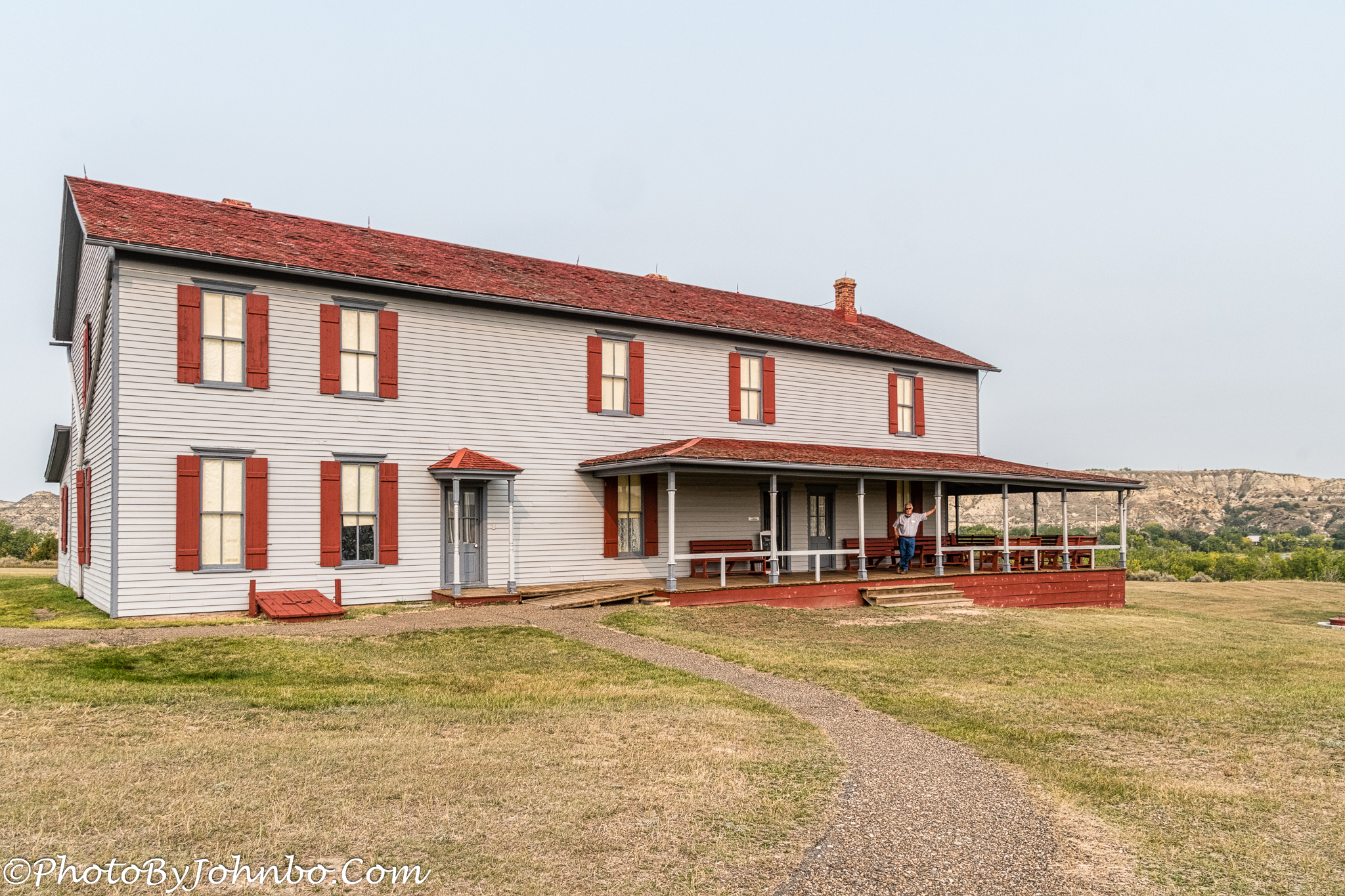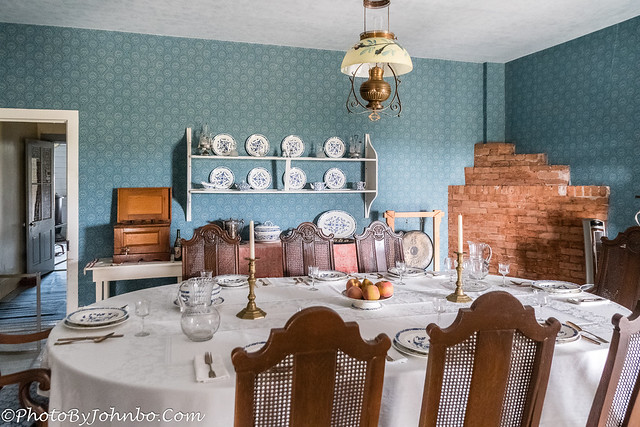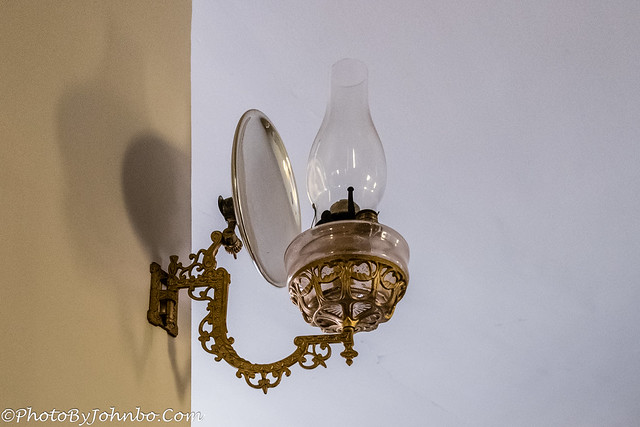
Medora, North Dakota.
Antoine de Vallombrosa came to North Dakota in 1883. The French aristocrat fancied himself a businessman of some acumen, but in North Dakota, he spent mostly family money on more than one failed business. His family money went a long way, and he built a 26-room summer home near a small town he built and christened Medora after his wife’s name. According to his biography on Wikipedia, he was known as a gunslinger who was quick to anger, a reputation that must have been well earned in only the three years he lived in North Dakota.
The Marquis de Mores, (Vallombrosa’s title,) built the “chateau” in 1883 for family visits. Really, it was a hunting cabin for the wealthy family and other visitors. The house is now a historical site that includes the grounds of the Marquis’ failed beef packing plant at the west edge of Medora. All that remains of the packing plant is a tall chimney, the buildings having been destroyed in a fire in 1907.
The house is built high on a hill that overlooks a valley. From the relatively sharp dropoff, other buildings on the property are also visible. A guided tour of the house describes the layout of the property and the life and times of the Marquis and his family. The outbuildings are the stables and barns. I have read that there are tours of the outbuildings, but one was not offered on the day of our visit.
Inside the house, our tour guide started with the large dining room, a bit smallish considering it’s a 26-room two-story house. There we learned of some of the ideas of the Marquis. As I share these images from inside the home, let’s chat a bit about the Marquis. From what I gather, he was either ahead of his time or simply inept at business.
Inspired by the invention of the refrigerator car, the Marquis planned to ship refrigerated beef, already butchered, to the steak houses of Chicago and points east. Instead of driving cattle to markets with its usual losses in weight and stress, the cattle would be butchered at the best time and the refrigerator cars would keep the meat fresh. The idea was sound, so apparently the failure was in execution.
Another of his failed businesses, a stage line between Medora and Deadwood, South Dakota was active for a short time. He concentrated on his cattle operation, but he was unable to break through the Chicago markets, and he couldn’t get the cooperation he needed from the railroad industry to make his plan competitive with more locally raised cattle. By 1886, the family investment money dried up and the Marquis and his family closed the plant and moved back to France.
The chateau has many bedrooms and a large guest area for guides and the gear of the guests who planned to hunt bison. The rooms are all well equipped with period furniture and accessories. Much of the furnishings were originally owned by the Marquis and his wife and were left for us to eventually enjoy as we toured the home.
In 1936, the descendants of the Marquis and Marquise donated the chateau and property within to the North Dakota State Historical Society. A treasure trove of history was left for guests to view the rugged life of the aristocrat turned cattle rancher, at least for a short time.
There is a visitor center near the chateau where you can purchase tickets for the tour of the chateau. It is also a museum of sorts with plenty of information about the area and life in Medora in the wild west of the 1890s. Expect to spend at least an hour exploring the exhibits and touring the chateau, more if you explore the outbuildings, should they be available for you to view when you visit.
On my Flickr site, I’ve published many more images from the interior of the chateau and some exterior shots of the beautiful landscapes that surround the summer home and lodge left to the historical society for our education and enjoyment. You can click on any image above to visit my Flickr site to see these and other images in 2K HD, Alternatively, you can visit the album page here to see thumbnails of all of the images shared there, and pixel peep at any you choose.
John Steiner








So glad that it has been preserved
Indeed, it is a historical treasure.
In some corners there seems to be brickwork for a fireplace which have their opening in the opposite room. Is that right?
As I recall, there were several fireplaces in that big house. I am sure what you note is correct. I don’t recall any fireplaces that could be accessed from two rooms.
That was an interesting tour, thank you John. I enjoyed your tales of the Marquis’s endeavours as much as your photos of that lovely old house!
He was indeed a colorful character in North Dakota history.
Thanks for the tour John. What an interesting home and story.
Thanks for taking the time to read and comment.
😊
I am so glad that the chateau has been so well preserved. I loved to read about the history of this place.
It is an interesting place that is now a museum of early North Dakota history.
That is great
At least he tried. I have the feeling that the US doesn’t often highlight failures, here it’s maybe easier because he was French 🙂
Though his business was a failure, (so was Teddy Roosevelt’s attempt at cattle ranching,) the Marquis did a lot for North Dakota creating a town in his wife’s name that is a crown jewel in the state.
He was a colorful character in North Dakota history and deserves credit for that. 🙂